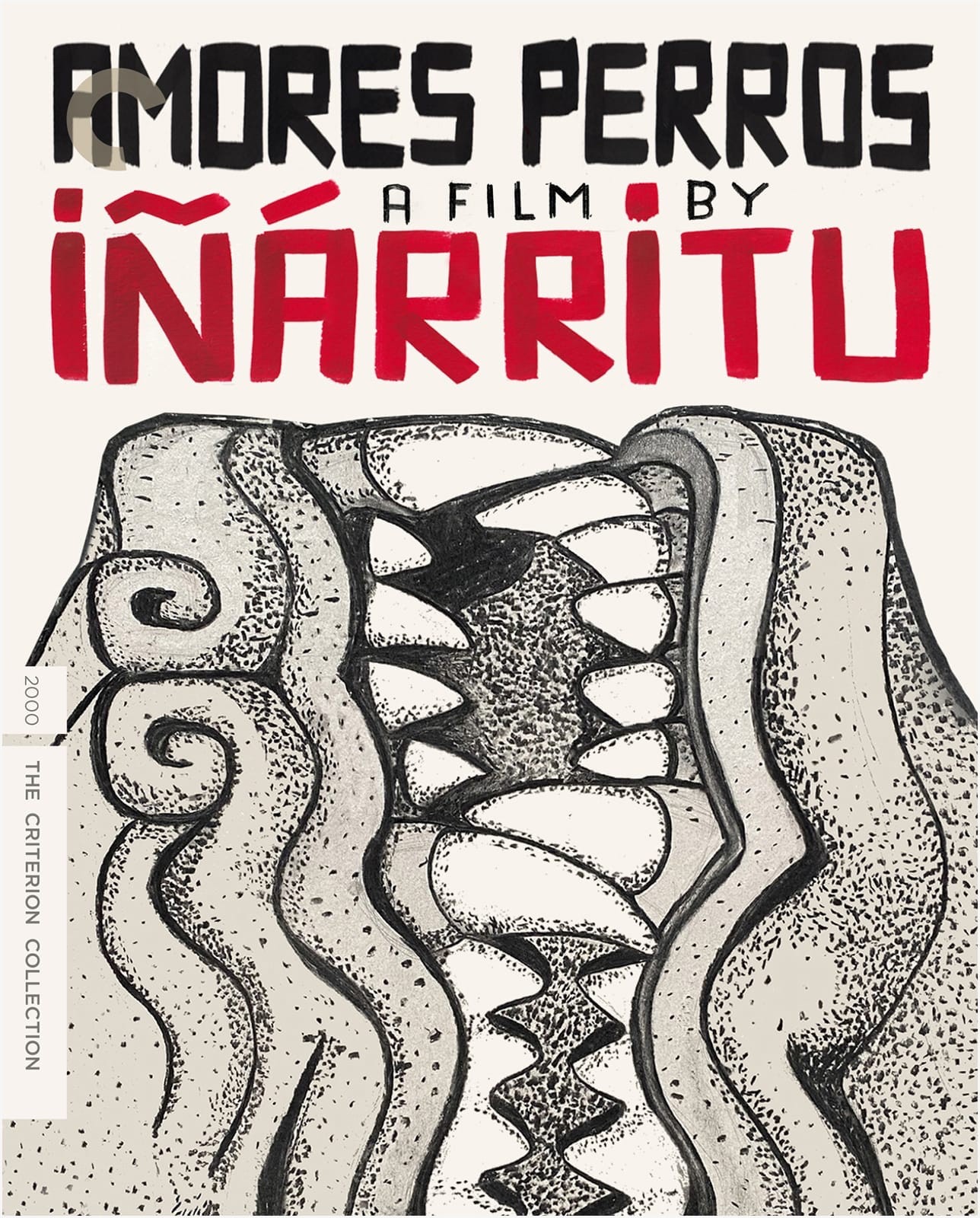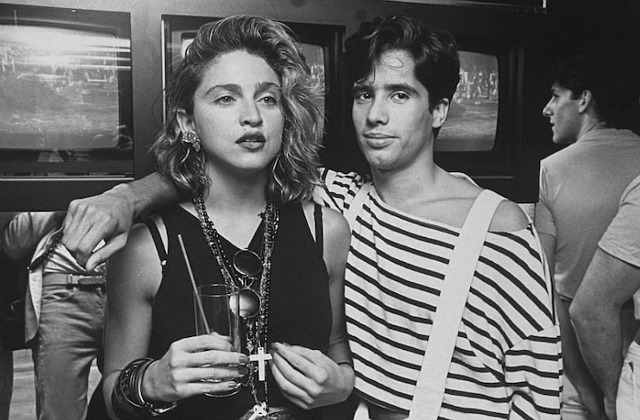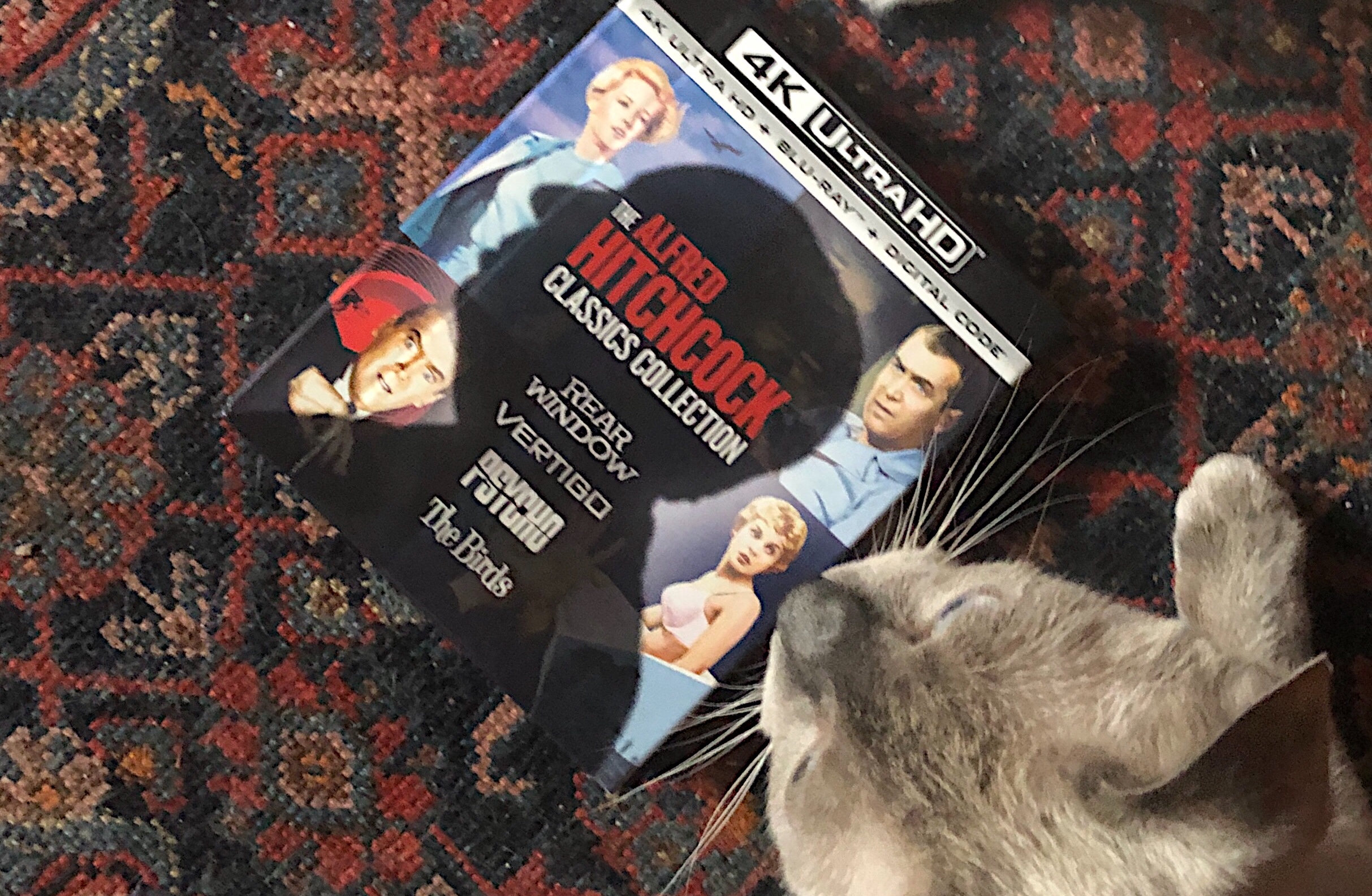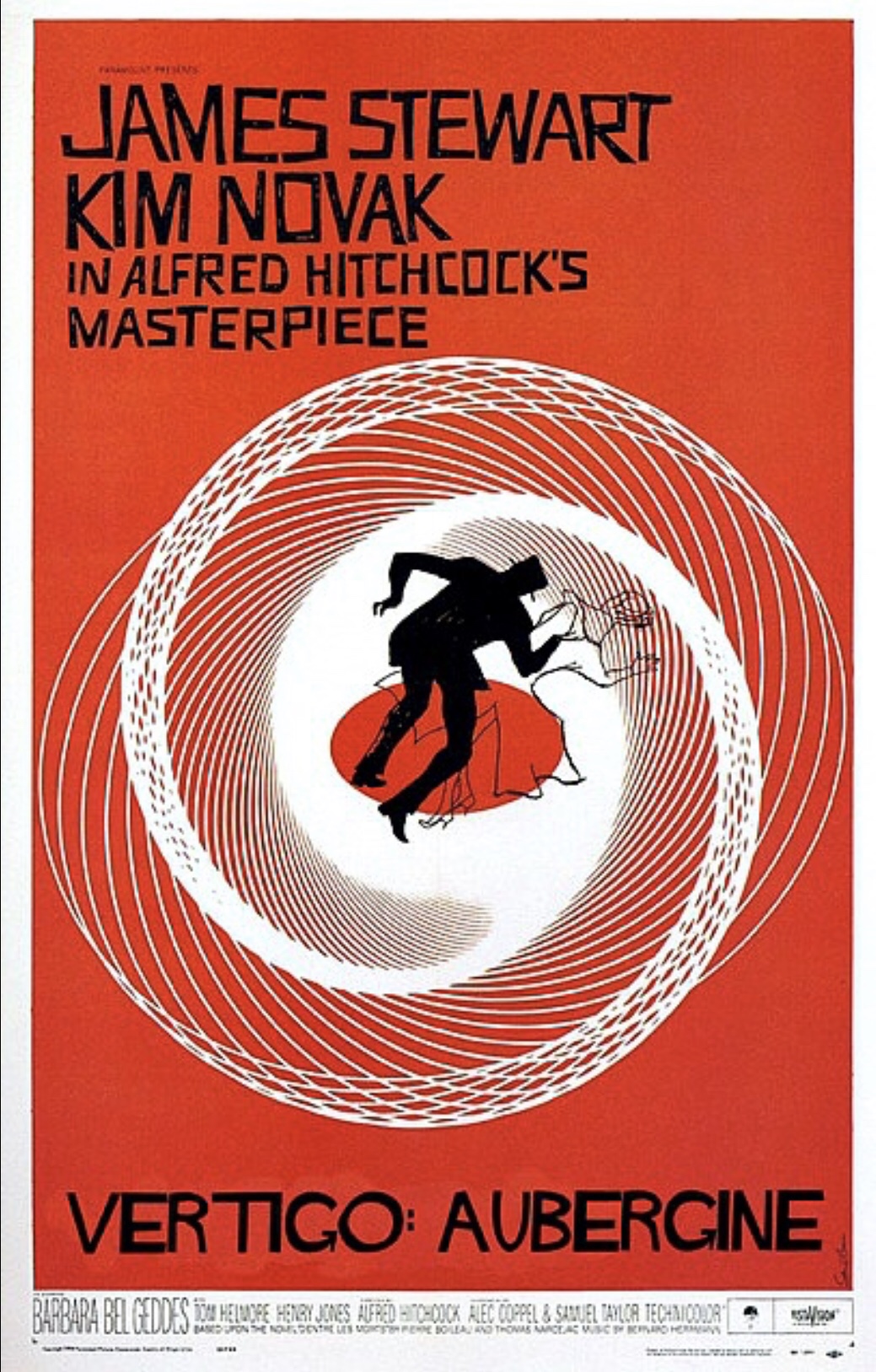Not just the film, of course, but the jacket art. One of the best Criterion covers ever. Amores perros had its big debut in Cannes on 5.14.00 — 20 years and change. The Bluray pops on 12.15.20.

Not just the film, of course, but the jacket art. One of the best Criterion covers ever. Amores perros had its big debut in Cannes on 5.14.00 — 20 years and change. The Bluray pops on 12.15.20.

Campaigning in comfortable work boots and sneakers (even if they’re whitesides) is a cool thing, a signature thing. I like what she’s saying. Seriously. Especially being 5’2″ and all.
But the tracking shot should have stayed with her another ten seconds or so.
Mrs. Vice President. pic.twitter.com/wvmrgFLmoa
— Jill Biden For FLOTUS (@Jillbiden46) September 15, 2020
…and I saw a huge rogue wave breaking toward my ship, I would turn the ship away (“full steam ahead, left hard rudder!”) so that the crest of the wave would smash into the stern. Yes, the ship would be momentarily engulfed and might even be submerged for a few seconds but would then pop through like a cork and be pushed along by the sheer force of energy. It would then basically surf atop the whitewater like a boogie board. That way Gene Hackman, Shelley Winters, Ernest Borgnine, Carol Lynley and Red Buttons might live to see another day. The one thing you never want to let happen is to allow the tidal wave to hit you from the side — that invites capsizing.
The legend is that right after yelling “cut!”, director Irwin Allen would always ask “is everyone okay?”
Today’s big story is about Madonna inking a deal with Universal to direct a biopic about herself, based on a script co-written by herself and Diablo Cody. Matt Donnelly‘s Variety story says the untiled pic will evolve under the wing of Uni’s filmed entertainment chairperson Donna Langley and producer Amy Pascal, whose shingle is set up on the lot. No casting announcements or production timeline.
This is the first time in history that any big-name talent has announced such an intention. And of course, the idea invites skepticism. Intriguing biopics have to about more than just “this happened and that happened,” and what hope is there, honestly, that Madonna, who’s directed two features, will be interested in conveying some kind of warts-and-all saga about who she is or was deep down? An approach, in short, that might push the usual biopic boundaries.
Official Madonna statement: “I want to convey the incredible journey that life has taken me on as an artist, a musician, a dancer…a human being trying to make her way in this world. The focus of this film will always be music. Music has kept me going and art has kept me alive. There are so many untold and inspiring stories and who better to tell it than me? It’s essential to share the roller-coaster ride of my life with my voice and vision.”
 Madonna and producer-mixer Jellybean Benitez, sometime around the release of her 1983 debut album.
Madonna and producer-mixer Jellybean Benitez, sometime around the release of her 1983 debut album.Three or four years ago Madonna made it clear that she was no fan of Elyse Hollander‘s Blonde Ambition, a top-rated Black List script about her struggle to find success as a pop singer in early ’80s Manhattan. I became an instant fan of this script, and declared in a 12.16.16 piece that “it’s going to be a good, hard-knocks industry drama when it gets made — basically a blend of a scrappy singing Evita mixed with A Star Is Born.”
At the very least Madonna and Cody should re-read Blonde Ambition and borrow as much as they legally can from it. Or, better yet, hire Hollander to come aboard as a co-writer.
Blonde Ambition “is a flinty, unsentimental empowerment saga about a tough cookie who took no prisoners and was always out for #1,” I wrote. “No hearts and flowers for this mama-san.
“A Star Is Born‘s logline was basically ‘big star with a drinking problem falls for younger ingenue, she rises as he falls and finally commits suicide, leaving her with a broken heart.’ Blonde Ambition is about a hungry, super-driven New York pop singer who, like Evita Peron (whom Madonna portrayed in ’96), climbs to the top by forming alliances with this and that guy who helps her in some crucial way, and then moves on to the next partner or benefactor, but at no point in the journey is she fighting for anything other than her own success, and is no sentimentalist or sweetheart.
Alternate: Our very own hungry, hustling, hard-charging singer, living on tips and dimes in NYC in ’81 and ’82, finally gets a leg-up when she cuts a deal with (and then falls in love with) Jellybean Benitez, who remixes her initially troubled debut album (which contained “Borderline” and “Lucky Star”) and makes it into a hit…but like with a previous boyfriend, bandmate Dan Gilroy, she eventually pushes Jellybean aside in favor of a new producer for her second album, Like A Virgin (’84). So Jellybean is the Vickie Lester of this tale, his heart broken at the end by a woman he loved but who finally loved only herself.
I never got around to watching Luca Guadagnino‘s We Are Who We Are until yesterday, which is when the debut episode began streaming on HBO. So that’s all I’ve seen of this eight-episode series — installment #1. (It’s embedded after the jump.)
Set in 2016, it’s a dive into here-and-now teenage alienation — an awkward-adolescence, coming-of-age, trying-to-figure-it-out thing about a 14 year-old kid (Jack Dylan Grazer, who just turned 17 in real life) with the worst taste in clothing…I have to stop myself right here. I don’t want to make this piece about my own sartorial preferences past or present, but if I was 14 today I would rather stab myself with a steak knife than wear an unsubtle, over-sized T-shirt with the ugliest pair of baggy, leopard-skin shorts ever manufactured in human history. Not to mention a pair of unappealing red sneakers…okay, I’ll give that part of the ensemble a pass.
We Are Who We Are is set on a U.S. military base near Venice, Italy, and it concerns the initially agonizing struggle of Grazer’s character, Fraser Wilson, to acclimate after flying in from New York to live with his mom, an Army colonel named Sarah (Chloe Sevigny), and her wife, Maggie (Alice Braga), who also wears a uniform. Fraser is gay but not “out,” or so it appears. (There’s an eye-rolling moment when he happens to step into a barracks and catch sight of a few Army guys taking a shower, and he just stares.) All kinds of new relationships, assessments and misadventures await the poor guy, the most prominent being Jordan Kristine Seamon‘s Caitlin, a long-haired, African-American beauty who appears to be more or less straight but you never know.
I didn’t initially care all that much for Frazer or the general vibe, to be honest, but then it began to gradually pull me in. Guadagnino, whose A Bigger Splash and especially Call Me By Your Name established him as a maestro of sun-kissed Italian sensuality and a certain instinctual, improvisational, come-what-may attitude about life’s possibilities, really gets into Fraser’s impressions and moods and whatnot, and even though he’s another typically inarticulate kid who lives deep in his head and inside whatever tunes he happens to be listening to, there’s something about the nowness, aliveness, alone-ness and scattered whatever-ness in the atmosphere of this thing that turns a certain key.
We Are Who We Are is breathing fresh air, up to something else and, to me at least, offering a new kind of stimulant.
Fraser seems so dorky, so emotionally stunted and scowling. He’s 14 but behaves more like an angry eight year old with a taller, lankier frame. I guess I’ll eventually get used to him. Interesting eyes but so fucking clueless and closed off. Yes, of course — so was I at that age. The difference is that I kept most of my anxiety bottled up inside, at least in the presence of elders and to some extent with my peers. I half-confided in a couple of friends, I suppose, although I probably wasn’t articulate enough at the time to even share my truest thoughts with myself. But at least I didn’t commit any clothing crimes.
A filmmaker friend who knows the series top to bottom assures me that “you’ll end up loving Fraser — he’s an angel of vengeance against the current.”
I don’t know what else to say except that the first episode has convinced me to see the series through to the end.
Kyle Buchanan, the N.Y. Times‘ award-season columnist and inheritor of David Carr’s “carpetbagger” handle, has written an excellent piece about Guadagnino and the series.
As a Santa Monica College film student, Tatiana is taking a Coen Bros. appreciation course. She’s in the midst of watching a long list of their films for preparation, and I’ve watched two or three with her. Unfortunately this immersion has reminded me of some aspects of their films that I don’t like all that much any more. Certain strategies or indulgences that I found captivating or delightful 20 or 30-plus years ago have lost some of their intrigue.
For the most part Blood Simple (’84) has lost none of its deliciously manipulative, film-nerd brilliance. The dying M. Emmet Walsh (as the sleazy gumshoe) looking up at that tiny glob of sink water and waiting with a mixture of apprehension and panic for it to drop onto his face is one of my all-time favorite closing sequences. Brilliant! But I also found myself irritated by the none-too-bright behavior of John Getz‘s “Ray” and especially his unquestioned and unexplored assumption that Frances McDormand‘s “Abby” killed her husband (Dan Hedaya‘s “Marty”), and his decision to make sure Marty is dead and then bury his body. I’ll accept a certain amount of stupidity on the part of a central character, but when he/she crosses the line I’m out.
I found myself doubling down on my hate for Raising Arizona (’87). I wrote last March about a friend slipping me a draft of the script in early ’86, before they began filming. I loved the dark humor, the flirting with absurdity, the Preston Sturges-like tone. But I was envisioning a film that would work against all that with a tone of low-key naturalism.
When I saw the finished film I was horrified. It was pushed way too hard — too pedal-to-the-metal. And I hated, hated, HATED John Goodman‘s Gale and William Forsythe‘s Evelle.” Simon Pegg once described Raising Arizona as “a living, breathing Looney Tunes cartoon” — that’s precisely what I hated about it.”
Then we watched Barton Fink (’91), which I hadn’t seen since…I forget but sometime in the mid to late ’90s. My first reaction was that the various horrors experienced by John Turturro‘s impossibly pretentious screenwriter (based, I’ve always assumed, on Clifford Odets) are a metaphor for a terrible case of writer’s block and the feeling of suppressed panic that takes over when you’re unable to make an idea or some kind of writing challenge “work” — to put it down on the page in a way that feels right and true and perhaps even profound. Hell, the inability to write anything along these lines and the self-doubt that creeps into your system the longer the blockage lasts.
This time I was filled with more and more irritation for Fink’s general arrogance and stupidity — his obstinate mindset, his inability (i.e., the Coen’s refusal) to share his thoughts, the refusal to watch a few Wallace Beery films or peruse some scripts for research, his inability to at least type out a few random ideas or at least write stuff on napkins. Once I succumbed to this negativity I started focusing on his ridiculous Eraserhead haircut, and the way his bare feet looked and the awful cut of his thick tweed suit and the fact that he travelled all the way from New York to California with some kind of overnight suitcase with room for maybe a shirt or two, a couple of boxer shorts and a couple pairs of socks but that’s all.
Yesterday a smirking Donald Trump derided climate science (for the umpteenth time) while Joe Biden called him, with ample justification, a “climate arsonist”…which doesn’t mean a thing as far as 40% of this country is concerned.
“Across the United States over the next 30 years, some 162 million people — nearly one in two — will most likely experience a decline in the quality of their environment, namely more heat and less water. For 93 million of them, the changes could be particularly severe, and by 2070, our analysis suggests, if carbon emissions rise at extreme levels, at least four million Americans could find themselves living at the fringe, in places decidedly outside the ideal niche for human life.
“The cost of resisting the new climate reality is mounting. Florida officials have already acknowledged that defending some roadways against the sea will be unaffordable. And the nation’s federal flood-insurance program is for the first time requiring that some of its payouts be used to retreat from climate threats across the country. It will soon prove too expensive to maintain the status quo.” — from a N.Y. Times Magazine piece, “HOW CLIMATE MIGRATION WILL RESHAPE AMERICA,” by Abrahm Lustgarten.
Where is the censorship, the brutality, the shunning, the repression, the severe scolding and sometimes even the ruining of people’s lives, the trashing and burning, the punishment for diverting from the party line, the gangs of roving goons yelling at diners in outdoor cafes?
When we think of classic fascism we think of the enforced uniformity of Hitler’s Germany and Mussolini’s Italy in the ’30s and early ’40s. When we think of political persecution we think of HUAC and its allies blacklisting lefty screenwriters in the ’50s. But right now fascism is entirely owned and administered by the American wokester left. Just ask Dave Chapelle. Hell, anyone who isn’t afraid to say what’s what.
I’ve been on the Vertigo Home Video Upgrade Journey for God knows how many years. I’ve been watching it theatrically since forever. At least eight or ten times since the early ’70s. I remember my first viewing of Robert Harris and Jim Katz’s 1996 70mm restoration on the Universal lot. I remember looking at a DVD version on a high-def monitor at Tower Video about 20 years ago and thinking “wow, that really looks amazing.” Little did I know. And then came the Bluray improvements in 2012…wowed all over again.
Last night I watched the new 4K Vertigo, and I was thinking over and over “Jesus, this is soooo beautiful…so much more vibrant and alive than what audiences saw in 1958…hell, that even Hitchcock himself saw in the Paramount lot screening room.”
The details are to die for…the penetrating, half-glowing colors, the soothing greens, deep blues, reds (especially the walls inside Ernie’s) and creamy ambers in Midge’s apartment…the bizarre unreality of James Stewart‘s brownish-gray toupee, the eyeliner underneath his baby blues and that beyond-weird aubergine suit (I described it years ago as “a mood suit, solid brown in sunlight or shaded-sunlight scenes and aubergine-tinted when he’s indoors”), the astonishing granular details, the hair and wardrobe fibres, the textures in the adobe walls lining San Francisco’s Mission Dolores and especially Mission San Juan Batista…I could go on and on.
How will it look when I watch it in 8K on my 85-inch home screen, four or five years from now? Bigger, of course, but better than what I saw last night? Doubtful.


…to write and perform a scene like this…a nice ‘n’ easy, no-sweat beginning-of-a-relationship scene between two whipsmart recognizables…no muss, no fuss, no bullshit…poking, prodding, teasing…figuring each other out. And then you throw in a little pre-dawn urban grandeur and just let the camera settle into it.
Last night I finally saw Michel Franco‘s New Order, a dystopian theatre-of-cruelty film that reminded me in some ways (certainly tonally) of Ridley Scott‘s The Counselor.
New Order premiered on 9.10 at the just-wrapped Venice Film Festival, and last weekend won the Silver Lion Grand Jury prize.
Set in Mexico City, it’s about a violent revolution against the wealthy elites by an army of ruthless, homicidal, working-class lefties. Director-writer Franco (After Luca, Chronic) is clearly tapping into all the insurrectionist anger out there (Black Lives Matter protests over the summer, the Hong Kong pro-democracy movement, last year’s French Yellow Vest demonstrations) and imagining the ante being raised a couple of notches.
Remember those rightwing thugs (“Los Halcones”) murdering leftists during that Mexico City demonstration in Roma? New Order is a roughly similar situation but with the lefties pulling the trigger, and with a lot more ferocity. Rage against the swells.
It struck me as a nightmare vision of what could conceivably happen if the ranks of our own wokester shitheads were to dramatically increase and anger levels were to surge even more.
New Order, trust me, is brutal, vicious and cold. But it’s so well made, and so unsparing in its cruelty. Franco is definitely the new Michael Haneke. He’s a very commanding and exacting director, but the film is ferocious and vicious, more so than even The Counselor (and that’s saying something).
I’ve sorry to admit I’ve been been derelict with Franco’s work before this. I’m going to try and catch up at the earliest opportunity.
I’m figuring that any serious fan of The Counselor would definitely be down with New Order. Especially given its Mexico City location, the fact that it deals with hostage-taking and exorbitant demands, and the fact that it has the same kind of cruel, compositional decisiveness and clarity of mind that Scott’s film had, only more so.
Franco is a very strong but, on the face of it, heartless director. Personally, I’m sure he’s personable and affable and humane and whatnot.
A filmmaker friend assures that Franco “is a nice fellow…he has a very surgical mind and his dramatic construction seems to veer towards the inexorable.”
Critic friendo: “I love those kinds of filmmakers! I feel their vision is actually quite compassionate — they’re just trying to be honest about a cruel world.”
What kind of publicist-protected, reality-defying bubble is Kate Winslet living in? Four days after sharing her “what the fuck was I doing working with Woody Allen and Roman Polanski?” remark with Vanity Fair‘s Julie Miller and generating a fair amount of head-shaking and accusations of award-season opportunism (at least on social media), she’s doubled-down on her discomfort and condemnation with Variety‘s Kate Aurthur.
On top of which Aurthur, a sturdy journalist who knows the score, decides to not even mention the fact that outside of #MeToo circles, Mia Farrow confidantes, the purview of Mark Harris and the ranks of Hachette employees, nobody on planet earth believes that Allen is guilty. No one informed, I mean.
Aurthur doesn’t even ask, “Uhm, sorry to interject but does the fact that an overwhelming body of evidence including the first-hand observations and convictions of Allen’s psychologist son Moses Farrow…does the fact that there’s absolutely no basis to believe in Allen’s guilt…does that, like, give you a moment of pause in this matter?”
Winslet: “We learn, we grow, we change. I think we should all be allowed to say, ‘Look, I shouldn’t have done that,’ you know? And I think this is a huge, seismic time for all of us, where we’re aware of how many planes we take, for example, or things we have done in the past, or would go back and wish to do differently. And I just want to lead with a bit of integrity, and to just be upfront and say, ‘You know what? I probably shouldn’t have done that.’ And so what I said in that Vanity Fair piece is really true, you know: I do regret it. I do regret it.”
“As soon as I was doing press for Wonder Wheel, it just made me crashingly aware that perhaps I shouldn’t have done this. But what was remarkable to me is that these are individuals who have been feted and praised and patted on the back for decades in this industry. And so by and large, it was presented to actors that these were people who it was okay to work with. But now, of course, I feel I can just say ‘I shouldn’t have done [this].’”